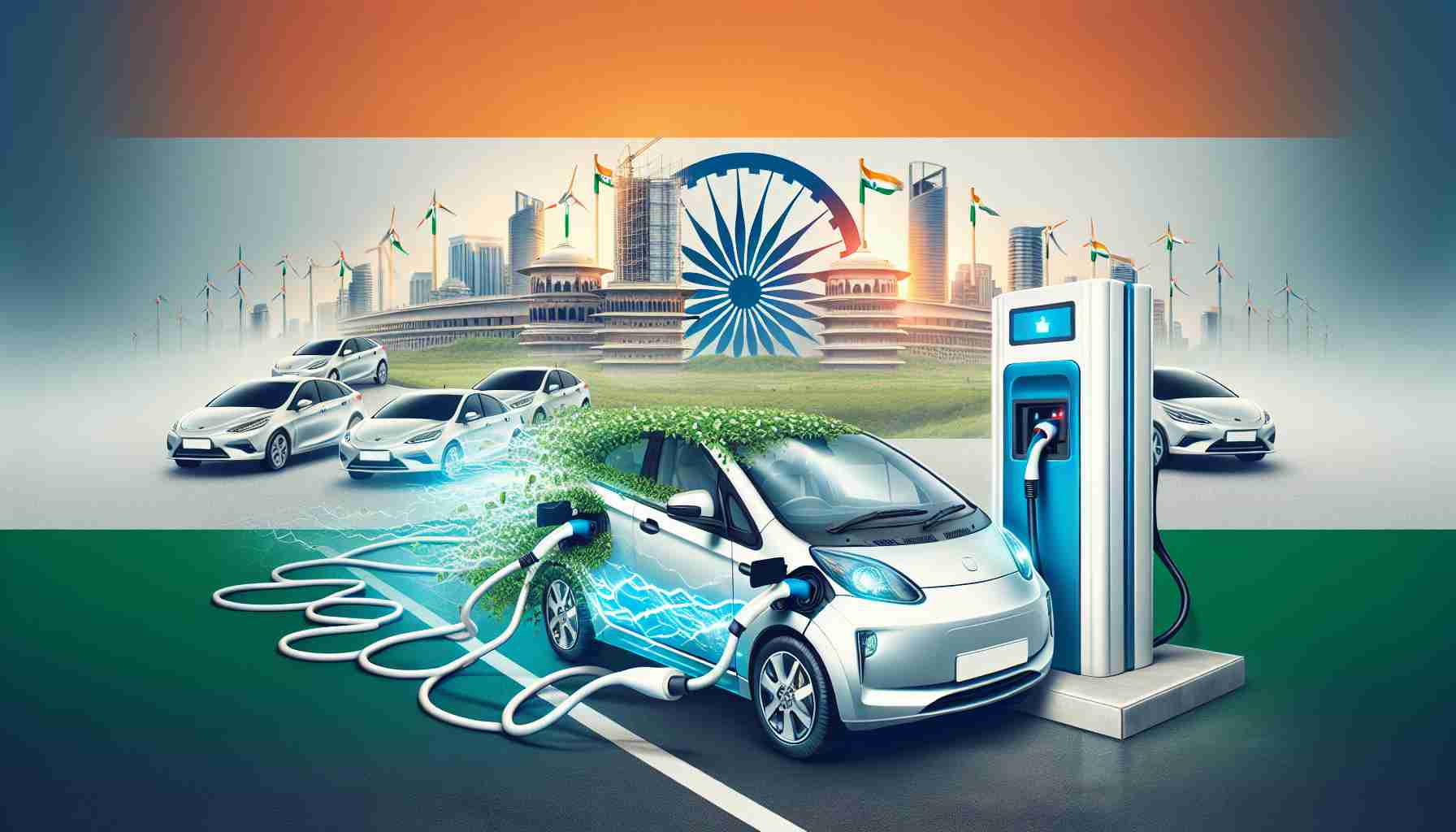- India’s EV charging infrastructure is significantly underdeveloped, with only one charger for every 135 EVs.
- To meet the growing demand, India requires approximately 3.9 million charging stations by 2030.
- Key barriers to progress include high costs, land acquisition issues, and low rural adoption rates.
- Investment from both public and private sectors, along with a strong legal framework, is essential for infrastructure growth.
- Successful examples from other countries highlight the impact of targeted policies and partnerships on EV adoption.
- Innovative financing, tax incentives, and streamlined regulatory processes are crucial to maximize India’s EV potential.
- A collaborative approach is necessary for India to achieve a sustainable and effective EV future.
India’s race to revolutionize electric vehicles (EVs) is hitting a serious speed bump. Despite a whopping $450 million funneled into startups for charging networks and battery swapping, the country’s EV charging infrastructure is lagging far behind the global curve. Currently, there is a staggering one public charger for every 135 EVs. To put that into perspective, the global standard is between one charger for every six to twenty EVs.
A recent report from GameChanger Law Advisors and Speciale Invest highlights a critical mission: to ramp up India’s charging networks to 3.9 million stations by 2030. But challenges abound—high costs, land acquisition snags, and low adoption rates in rural areas are stifling progress. Nonetheless, optimism remains high as the demand for EVs surges, bolstered by advancements in technology and dropping battery prices.
The report paints a clear picture: strong public and private investments, along with a solid legal framework, are crucial for fast-tracking infrastructure development. Looking at success stories from the UK, Singapore, and California, it’s evident that targeted policies and partnerships can fuel adoption.
Experts assert that India must embrace innovative financing, tax incentives, and streamlined approvals to unlock its full EV potential. A future-proof infrastructure isn’t just about having vehicles on the road; it’s about ensuring the support systems are in place for mass adoption. The message is clear: a collaborative approach is essential for steering India towards a sustainable and electrifying future!
India’s EV Infrastructure Revolution: What You Need to Know!
India’s Electric Vehicle Revolution: Current Challenges and Future Directions
India is in a pivotal race to transform its electric vehicle (EV) landscape, grappling with significant challenges despite a substantial investment of $450 million aimed at enhancing charging networks and battery swapping solutions. The country faces a dire situation where there is currently one public charger for every 135 EVs, far below the global standard of one charger for every six to twenty EVs.
The Current State of EV Charging Infrastructure
A recent report from GameChanger Law Advisors and Speciale Invest underscores the urgency of expanding India’s EV charging infrastructure to an ambitious 3.9 million stations by 2030. However, various obstacles impede progress, including:
– High Costs: Establishing charging stations and battery swapping infrastructure requires substantial financial resources.
– Land Acquisition Issues: Securing suitable locations for charging stations often encounters bureaucratic hurdles.
– Low Adoption in Rural Areas: The lack of widespread EV adoption in less urbanized regions poses additional challenges for infrastructure development.
A Glimpse of the Future: Investments and Innovations
The report highlights the necessity for strong public and private investments and a robust legal framework to drive infrastructure development. Learning from successful initiatives in the UK, Singapore, and California, it’s clear that targeted policies and partnerships play a crucial role in promoting EV adoption.
Experts recommend that India adopts innovative financing methods, enticing tax incentives, and smoother approval processes to maximize its potential in the EV sector. It is not just about increasing the number of EVs on the road but also about ensuring that the necessary support systems are established for widespread acceptance.
Key Considerations for the EV Future
1. Market Trends: As battery prices continue to drop and technology advances, consumer demand for EVs is expected to surge dramatically in the coming years.
2. Sustainability Initiatives: Emphasis on sustainability and reducing carbon emissions will continue to drive investments in EV infrastructure and technology.
3. Predictions for 2030: If the current trajectory continues, experts predict that India could emerge as a major player in the global EV market by 2030, provided it addresses existing infrastructure gaps effectively.
Frequently Asked Questions
Q1: What are the main challenges facing India’s EV infrastructure development?
A1: Key challenges include high setup costs, land acquisition hurdles, and low adoption rates in rural areas. These factors hinder the rapid expansion needed to meet growing demand.
Q2: How does India’s EV charging infrastructure compare globally?
A2: Currently, India has one public charger for every 135 EVs, significantly lagging behind the global average of one charger for every six to twenty EVs.
Q3: What strategies can accelerate the growth of EV infrastructure in India?
A3: Adopting innovative financing models, offering tax incentives, and streamlining land acquisition and approval processes are crucial strategies highlighted by experts.
Learn More About India’s EV Initiatives
For deeper insights into India’s electric vehicle initiatives and infrastructure development, visit Ministry of Electronics and Information Technology.














